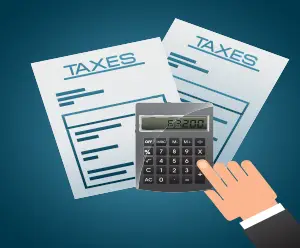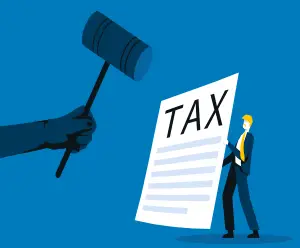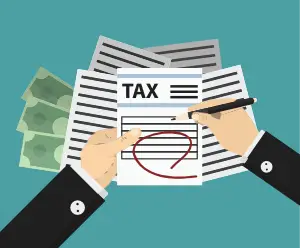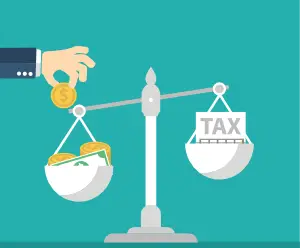
Understanding the IRS Substitute for Return
Click to ask Mike Ask Mike The Internal Revenue Service (IRS) Substitute for Return (SFR) is a term many taxpayers

The excitement of anticipating a tax refund can quickly turn into concern when the IRS decides to offset it. In this detailed guide, we will walk through the intricate process of understanding and resolving tax refund offsets. From common reasons for offsets to disputing CP49 Notices and utilizing forms like Form 8379 for Injured Spouse Allocation, we will provide step-by-step instructions. Additionally, we’ll explore the Offset Bypass Refund (OBR) and relief options, ensuring you have the knowledge needed to navigate these challenges effectively.
An IRS Tax Refund Offset specifically refers to the interception or reduction of a taxpayer’s federal income tax refund by the Internal Revenue Service (IRS) to satisfy certain outstanding debts. The IRS may use a tax refund offset to collect various types of federal debts, including:
Unpaid Federal Taxes: If a taxpayer owes back taxes or has outstanding tax liabilities, the IRS may use a tax refund offset to collect the amount owed.
Federal Student Loans: The IRS can offset tax refunds to repay defaulted federal student loans. This is often done in coordination with the Department of Education.
Child Support Arrears: In cases where an individual owes past-due child support payments, the IRS can use a tax refund offset to help fulfill those obligations.
Checking your refund status online using IRS e-file can provide insights into the reasons behind the offset. This step is essential to understanding the changes made and the amounts withheld or added.
The Offset Bypass Refund (OBR) serves as a safety net for extreme financial hardships. Qualifying for an OBR refund can provide much-needed relief in situations where a taxpayer is facing eviction or other severe financial crises.
Reclaiming an offset tax refund is possible through Injured Spouse Allocation or Innocent Spouse Relief.
Form 8379 – Injured Spouse Allocation:
Form 8857 – Innocent Spouse Relief:
If you disagree with an IRS tax refund offset and have evidence proving you do not owe the IRS, you can appeal through the Taxpayer Advocate Service.
Effectively navigating tax refund offsets requires a detailed understanding of the reasons behind them and strategic use of available options for dispute and relief. Whether disputing CP49 Notices, exploring Injured Spouse Allocation or Innocent Spouse Relief, or considering the potential for an Offset Bypass Refund (OBR), these step-by-step instructions empower taxpayers to address issues proactively and work towards a resolution with the IRS. Stay informed, gather necessary documentation, and consider seeking professional advice to ensure a comprehensive and effective approach to resolving tax refund offset challenges.
You can now ask our AI assistant any questions you have about your tax debt or any tax-related issues. Whether you’re unsure about payment plans, need clarification on penalties, or want information on how to resolve your tax situation. Our AI is ready to assist you with all your tax-related concerns.

By interacting with our AI assistance, you agree to our terms & conditions. Enjoy our AI Tax Assistant responsibly.
Ask me any questions...
Related Posts

Click to ask Mike Ask Mike The Internal Revenue Service (IRS) Substitute for Return (SFR) is a term many taxpayers

Click to ask Mike Ask Mike The Internal Revenue Service (IRS) Substitute for Return (SFR) is a term many taxpayers

Click to ask Mike Ask Mike The Internal Revenue Service typically operates within a 10-year window, commencing from the

Click to ask Mike Ask Mike The Internal Revenue Service (IRS) operates within specific timeframes dictated by statutes of limitations

Click to ask Mike Ask Mike understanding the ins and outs of the 10-year statute of limitations (SOL) is essential.
Recent Posts

Click to ask Mike Ask Mike The Internal Revenue Service (IRS) Substitute for Return (SFR) is a term many taxpayers

Click to ask Mike Ask Mike The Internal Revenue Service (IRS) Substitute for Return (SFR) is a term many taxpayers

Click to ask Mike Ask Mike The Internal Revenue Service typically operates within a 10-year window, commencing from the

Click to ask Mike Ask Mike The Internal Revenue Service (IRS) operates within specific timeframes dictated by statutes of limitations

Click to ask Mike Ask Mike understanding the ins and outs of the 10-year statute of limitations (SOL) is essential.
Disclaimer: This is educational content, not legal, accounting, or tax advice.
This is a tax debt resource website, not to be used in lieu of a tax attorney or for legal advice. All information, Ai chat responses, articles, materials, and content are intended to inform users on a variety of tax topics. In no way is it intended to be construed as accounting, legal, tax, other services or advice. This site is not intended to be used to avoid tax penalties or tax debt that may be imposed by law. Terms and Conditions. Your use of this site constitutes acceptance of the following terms and conditions.
This is a tax debt resource website, not to be used in lieu of a tax attorney or for legal advice. All information, Ai chat responses, articles, materials, and content are intended to inform users on a variety of tax topics. In no way is it intended to be construed as accounting, legal, tax, other services or advice. This site is not intended to be used to avoid tax penalties or tax debt that may be imposed by law. Terms and Conditions. Your use of this site constitutes acceptance of the following terms and conditions.
© 2023 · Tax Debt Monster, Inc. All rights reserved

For all Tax Professionals that would like to partner up with us. By partnering with us, you’ll help us connect and make a positive impact in the tax community. Partner up with us and receive a complimentary Ai Tax Sidekick to help support your clients at no cost! Click here if you’re interested in our Partner-Up program

By interacting with our AI assistance, you agree to our terms & conditions. Enjoy our AI Tax Assistant responsibly.
How may I help you with your tax issue?